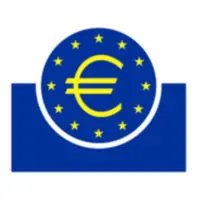European consumers consider the ability to make instant contactless payments, including person-to-person transfers, to be a priority and “a very important selling point” for a digital euro, according to European Central Bank (ECB) research.

Participants in the research identified the ability to make such payments from a digital wallet that could be used “regardless of the platform or device used by the payers and payees” as being “even more appealing” and support for biometric authentication of digital payments as “highly desirable”.
The ECB’s Study on New Digital Payment Methods also shows that consumers believe that any new digital payment method, such as a digital euro, should be universally accepted across the euro area “regardless of the size of the purchase”, be available as a one-stop solution that gives access to a range of payment options on a single device, and be easy to use, secure, reliable and fast.
Public priorities
“With regard to making payments with a new digital wallet, contactless payment was the main priority for the general public. Instant transfers, including those from person to person, were also highly desirable,” the research paper says.
“Participants wanted the option of confirming and giving permission before payment, but opinions differed as to how this should happen. Some participants mentioned a PIN or one-time password (OTP), while others would prefer biometric confirmation, such as face or fingerprint recognition.
“In general, the younger the respondent, the less likely was the preference for a PIN or other less convenient verification methods.
“Most tech-savvy participants wanted biometric authorisation using face, fingerprint or iris scanning, but some preferred two-factor authentication, for example a combination of biometrics and a code.
“However, most disliked the idea of multilevel authentication as it was deemed a burdensome procedure for users to switch from the app to a text and so on. The use of PIN codes for authentication was viewed as dated and cumbersome, and QR code-based authentication also had little appeal.
“There was a general consensus that authentication methods should vary by amounts. Lower value payments — eg under €50 [US$55] — should not require authentication, just a swipe, while larger value payments should require authentication.
“The tech-savvy expressed a desire for the possibility to set their own authentication limits, and some suggested the wallet should also learn from previous occurrences.”
The 128-page paper also contains more detailed information on the findings in each of the 19 euro area countries where the research was conducted with consumers, merchants, people with knowledge of technology and those with limited access to banking services or the internet between October and December 2021.
The ECB conducted the research as part of its two-year investigation into the design, distribution and use of a digital euro that it launched in July 2021.
Next: Visit the NFCW Expo to find new suppliers and solutions